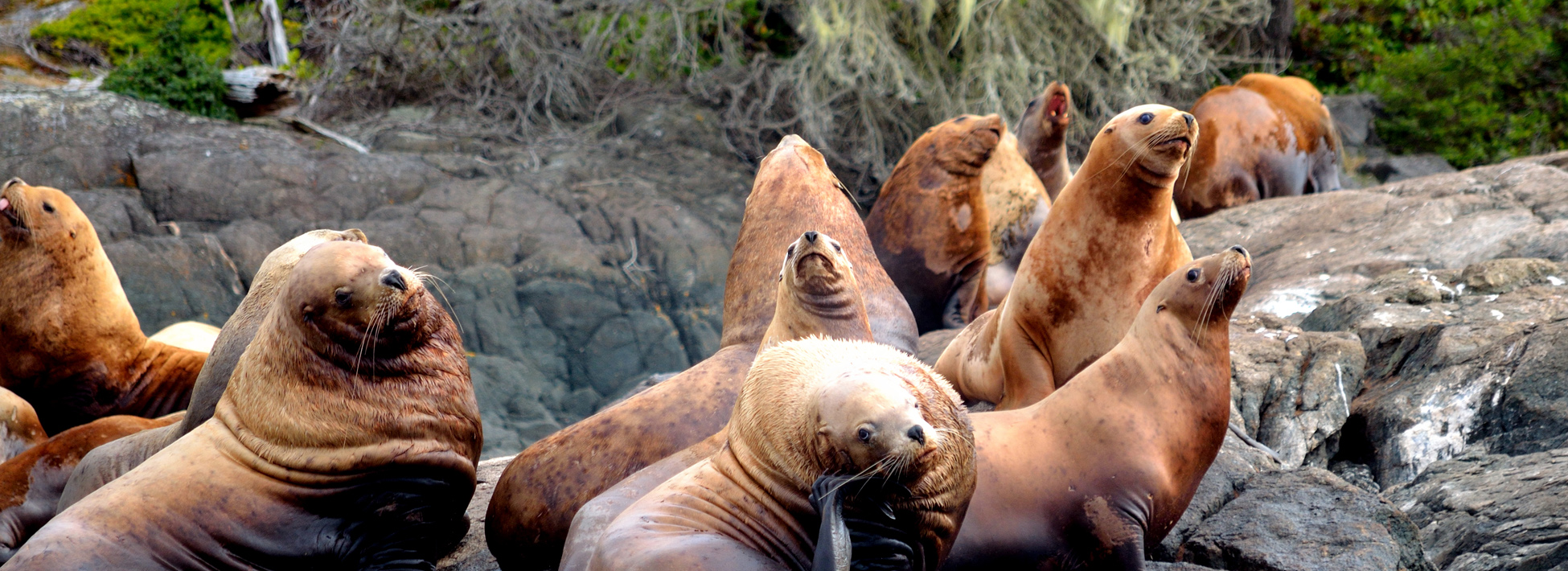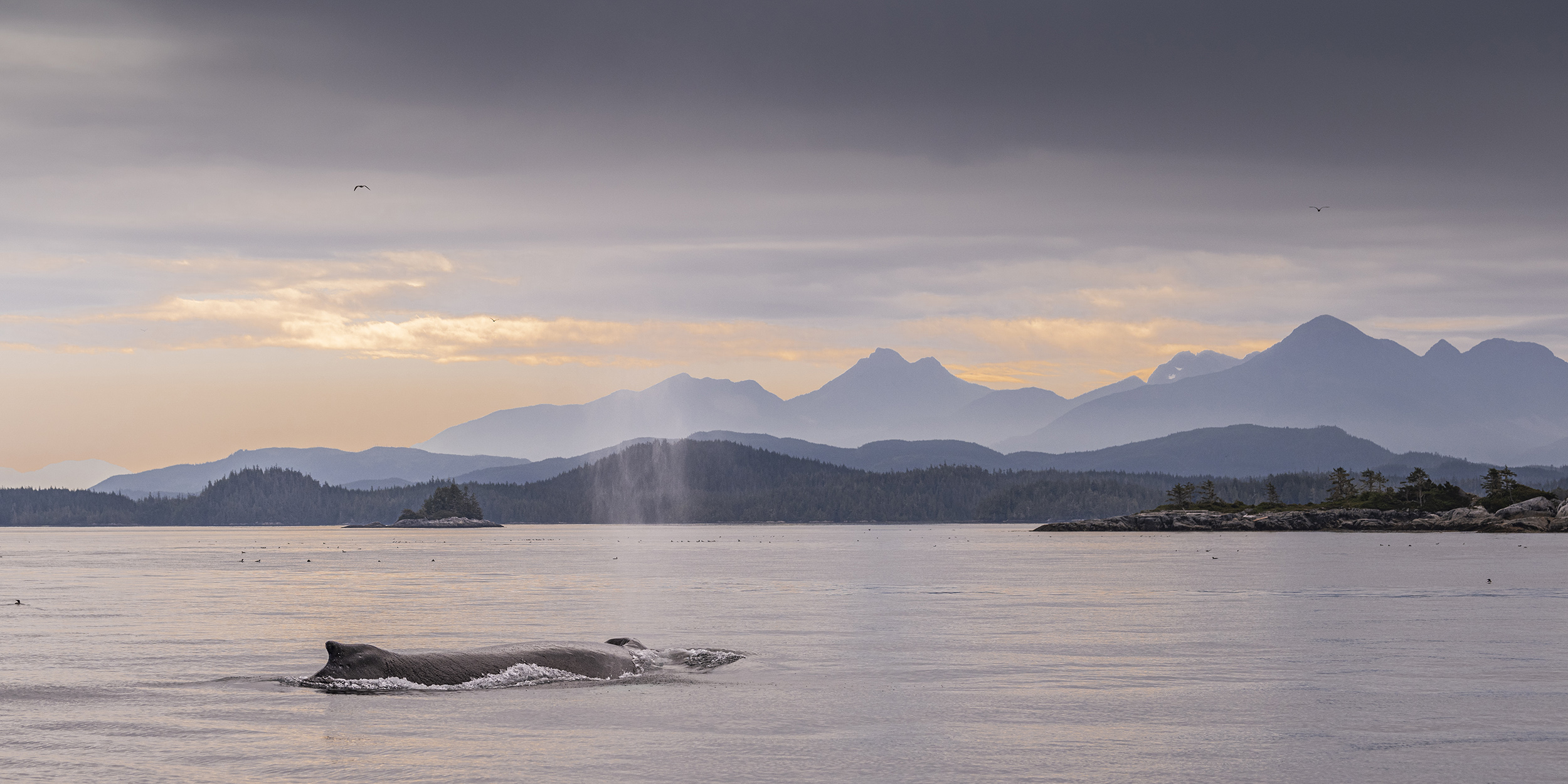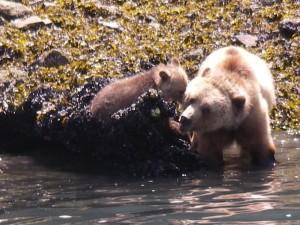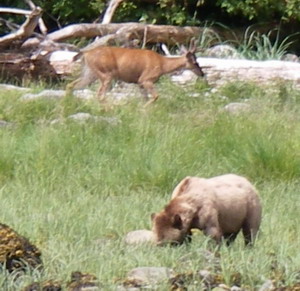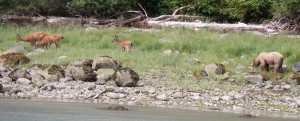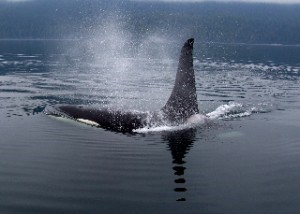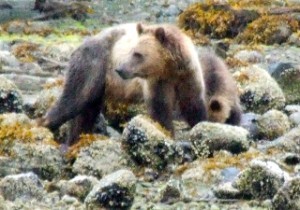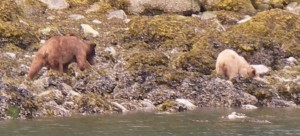 This is a sequence of pictures from late July last year. The darker male grizzly bear was so thin that you could count his ribs but he was not into eating. Although most of the mating takes place in May and June this bear has a one-track mind. Mating is a highly evolved ritual. Once females come into season, they may leave scent trails, and male bears quickly hone in on the scent….more tomorrow.
This is a sequence of pictures from late July last year. The darker male grizzly bear was so thin that you could count his ribs but he was not into eating. Although most of the mating takes place in May and June this bear has a one-track mind. Mating is a highly evolved ritual. Once females come into season, they may leave scent trails, and male bears quickly hone in on the scent….more tomorrow.
Grizzly Bear and Wildlife Viewing Blog: Monthly Archives: July 2014
Warm as a bathtub?

One of the viewing platforms used on the fall Grizzly Bear Canada tours is opposite the weir that acts as an entrance to the spawning channel. We normally use the finger stand as it has more of the natural river and does not show the weir in the background but occasionally we stop and check out the weir. On this day there was a grizzly just relaxing, not a care in the world. “Little more privacy please, no flashes.”
June Grizzly and Cub
This was a good day with the bears. This is a common scene in the spring when mothers bring their cubs to the beach to feed. The run up Knight Inlet on the grizzly bear tour day to the Glendale River estuary is 40 km (26 m) and the last 5 km (3 m) is often referred to as the nursery. The mother grizzlies bring their cubs to this area to avoid the larger males in Glendale Cove. Remember grizzly mating season runs from May to early July and this places new cubs in danger.
Friends? (2 of 2)
At one point in time they were not much more than ten meters (yards) apart. The beach seemed to have pretty good footing for the deer so they were not worried about a sudden lunge from the bear. I am sure the grizzly had determined that the chance of catching one of the deer was not worth the waste of energy required.
Friends? (1 of 2)
Most of the grizzly watching tours from the lodge arrive at the River estuary on Knight Inlet and view the coast black tail deer. The sedge grass is high in protein and provides an excellent food for both deer and grizzly bears. It is the main food sources for grizzlies along with the protein from turning of rocks. The three male deer on the beach with a young grizzly seem to be keeping their distance for a quick get-away.
Resident Killer Whales
Excellent picture of the orca we see in the Johnston Strait while on a whale watching safari. The resident orcas (fish eaters) return to the area in late June and remain through late October. Their return corresponds to the arrival of the salmon, which attract the many fishers to the area to try their luck on catching a “Tyee”. A tyee is a large salmon over thirty pounds (13.6 k). Thanks again Karen and Martin for the provided this photo.
Grizzlies searcing for protein
Grizzlies on the beach! That is where we find them until late August and the salmon arrive in the river. Once the salmon arrive the bears move up the river with the salmon and then we use our viewing stands on the spawning channel. Until that time we have excellent viewing of the bears as they eat the sedge grasses in the Glendale Estuary and forge the beach by turning over rocks and eating anything that moves or at least provides protein. Again Karen and Martin visiting from the UK provided this photo.
Grizzly Bear Triplets
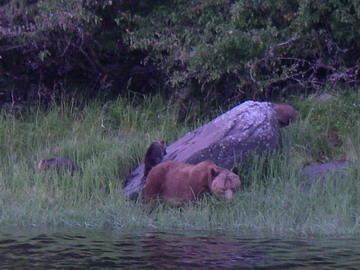
Note that there are three cubs: to the left of the rock, on the rock and to the right (partially hidden by the rock). We watched this family for about an hour and I was not able to get a clear photo of the family together. My guest got good photos but then they were not maneuvering the boat and taking pictures. That’s my excuse. Grizzly cubs, twins and triplets, are not uncommon in the area of Knight Inlet. It is a sign that the females are healthy and able to handle multiple births. The cubs are born in the winter den and if the female is not in good health (enough fat to feed her and her expected babies) the eggs are absorbed and no cubs are produced. Many of these multiple births survive their first year as they are seen the following year still with their mothers.
Bait fishing for bald eagles
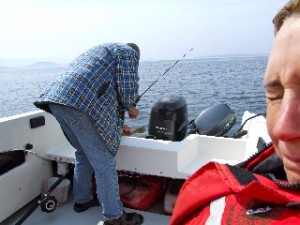 If time permits while you are whale watching and if there is a shortage of suitable food back at the lodge your guide may jig up a few bottom fish to feed the camp eagles. The guest reaction to the fact that I must “knock” the fish on the head is often a mixed response. As much as they want to see an eagle fed there is a certain amount of sympathy for the fish. Karen and Martin visiting from the UK provided this photo.
If time permits while you are whale watching and if there is a shortage of suitable food back at the lodge your guide may jig up a few bottom fish to feed the camp eagles. The guest reaction to the fact that I must “knock” the fish on the head is often a mixed response. As much as they want to see an eagle fed there is a certain amount of sympathy for the fish. Karen and Martin visiting from the UK provided this photo.
June Bears
In late May and early June the grizzlies show up in the Glendale River estuary and along the shores on Knight Inlet. They have come out of hibernation having lost a significant amount of their body fat and are looking for food. Some bears are in much better shape, after a long winter, than other bears. This male grizzly is in good shape and ready for the breeding which takes place at this time of the year. He is also the reason the mother grizzlies keep their cubs away from the river estuary.
